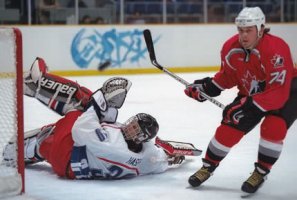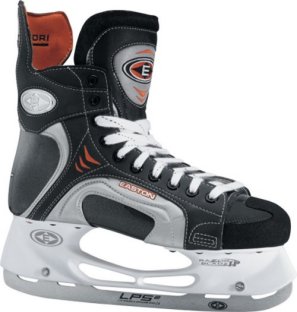
Olympic hockey. What’s it all about?
“Many of life's failures are men who did not realize how close they were to success when they gave up.”
Thomas EdisonOlympic hockey has come a long way since it was included in the Antwerp games back in 1920.
The name hockey comes from the French word hocquet which means stick. It’s not clear how the game got started but the story goes that British soldiers stationed in Nova Scotia, Canada were playing hockey games of one sort or another.
The first winter olympic hockey games took place in the 1924 games in Chamonix, France. The first women’s games were held in Nagano, Japan in 1998. Women compete in an eight team tournament whereas the men compete in a twelve team series.
| 120W X 360 |
A regular olympic hockey game consists of three 20 minute periods with a 15 minute rest in between. In case of a tie at the end of the third period, a five minute intermission will take place and then a sudden death period of overtime is played. If the game is still tied after that period, a shoot out takes place to determine a winner. The shootout will feature the best 3 out of 5 shots to go in the net.
 Skates
Skates
The players must wear solidly built ice skates. The boots are made of many layers of material with padding in just the right places. They must cushion the foot but not allow it to move inside. Ankle support is extremely important as the players who may over 200 pounds must change direction instantly by throwing their weight into the turns causing tremendous stress on the skates.
The blades must be kept very sharp for good control. Certainly before every game and sometimes within the game itself, if a player is not happy with their performance.
Sticks
Up until recently the olympic hockey sticks were made by combining a blade of wood into a wooden handle by gluing the joints together. The player wrapped the blade with tape to hold it solid and to assist in shooting the puck. This was the way most sticks were made for many years. The blade had a slight bevel on one side or the other for players to shoot high or left handed.
In the 1960s Bobby hull of the Chicago Black Hawks was one of the first to put a curve in the blade of the stick that not only caused the puck to go faster but it also created a wobble in the flight of the puck. The National Hockey League found it necessary to regulate the arc of the curve to standardize it.
In the 1990s composite sticks began to appear. They are made of different man made materials such as Kevlar, plastics and fiberglass.

The players both professional and olympic hockey, are very well padded. The helmets are made of hard plastics. They have face screens or shields. Under those colorful sweaters the player has shoulder protection for the upper body. Elbow pads. Hockey gloves with plenty of padding. Their hockey pants are all padded and knee pads cover the section from above the knee to the skates.
When the puck is shot by a player the speed may reach over 100 miles per hour and so all that padding is required. Even still, injuries will occur.
 The goalie must be heavily padded but must have great flexability. In this photo you can see the wide pads he wears as well as the huge catching glove.
The goalie must be heavily padded but must have great flexability. In this photo you can see the wide pads he wears as well as the huge catching glove.
The olympic hockey goalie wears a special protective face mask. Very colorful. This protects the goalie from getting hit not only from the puck but from sticks and skates which can inflict heavy damage during scrambles around the net.
Johnny Bower was a great goalie for the Toronto Maple Leafs, playing fearlessly without a mask until the ripe old age of 46.
Jacque Plant of the Montreal Canadians was the first goalie to wear a mask
Learn the game. Olympic Hockey academy camps, lessons, drills. Learn with the best.
For all of the events check out these Olympic sports events.
Speed skating Power and agility on skates.
Figure Skating Beauty and grace on ice.
Alpine skiing. Racing the clock.
Bobsleds. see how they are constructed.
Bobsledding. Breakneck speed on solid ice.
Nordic skiing. Exciting races on skinny skis.
Biathlon Nordic skiing and rifle shooting combination.
Curling. The ancient game just gets better.
Luge. How fast will the sled go.
Ski Jumping.Soaring through the air like a bird.
Freestyle Skiing. daring acrobats on skis.
Return from Olympic Hockey to Whistler Outdoors



